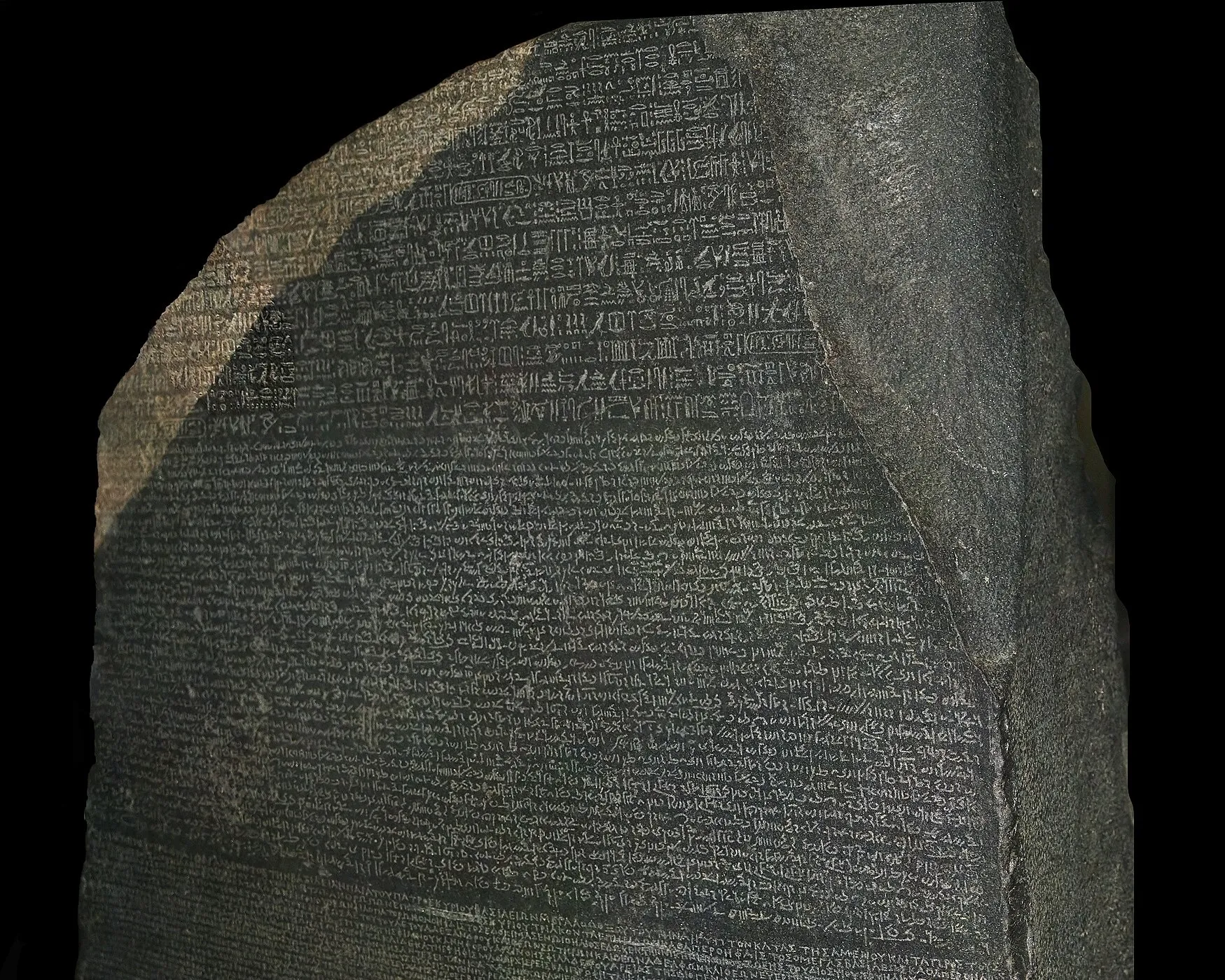From forgotten scripts to global fame, the Rosetta Stone rewrote history by revealing the language of pharaohs
 |
| Rosetta Stone / Image Credit: Wikimedia |
In 1799, near the Egyptian town of Rosetta (modern-day Rashid), a French soldier digging during Napoleon's campaign unearthed a slab of black granodiorite that would forever alter our understanding of the ancient world. The unassuming artifact, later known as the Rosetta Stone, bore inscriptions in three scripts: Ancient Egyptian hieroglyphs, Demotic script, and Ancient Greek. This trilingual marvel became the key to decoding hieroglyphs, a written language that had mystified scholars for centuries.
Why the Rosetta Stone Matters
For over a millennium, Egyptian hieroglyphs were unreadable, lost to time after the decline of ancient Egyptian civilization and the rise of Christianity and Islam. Priests and scribes once fluent in this sacred script had long vanished. By the time European scholars took interest in ancient Egypt, the meaning behind hieroglyphs had become little more than artistic mystery carved into the walls of temples and tombs. The Rosetta Stone offered a bridge between the known—Ancient Greek—and the unknown—hieroglyphs.
It was the parallel texts on the stone that made it such a powerful tool. Since the Greek text could be read, it acted as a translator's Rosetta, enabling scholars to cross-reference and slowly decode the forgotten scripts. This monumental achievement didn’t happen overnight. It would take years of laborious effort, with several linguists racing to crack the code.
Jean-François Champollion and the Breakthrough
In 1822, a French linguist named Jean-François Champollion made the historic breakthrough. By comparing names in the Greek and Egyptian texts, he identified phonetic characters used to spell foreign names like “Ptolemy” and “Cleopatra.” This insight led to the realization that hieroglyphs were not purely symbolic but also phonetic. Champollion’s discovery laid the foundation for modern Egyptology and transformed hieroglyphic writing from decorative mystery to readable history.
 |
| Jean-François Champollion (Champollion le jeune) / Image Credit: Wikimedia |
With this newfound information, the mysteries of ancient Egypt started to come to light. Inscriptions on temples, monuments, and papyrus scrolls could now be read by historians providing them with knowledge about Egyptian religion, politics, medicine, and daily life.
The Legacy of the Rosetta Stone
Today, the Rosetta Stone is more than just an archaeological artifact—it's a global icon of linguistic discovery. It resides in the British Museum in London, where it draws millions of visitors annually. Its legacy extends beyond Egyptology. The term “Rosetta Stone” has become synonymous with any critical tool or discovery that makes the inaccessible accessible. It’s even inspired modern language-learning apps and space missions, such as the European Space Agency’s Rosetta probe, which explored a comet.
The stone has also become a symbol of colonial debate. Egypt has repeatedly called for its return, arguing that it was taken without consent during a time of imperial control. Britain, however, maintains that it was legally acquired. This ongoing debate touches on broader conversations around ownership, restitution, and the legacy of imperialism in global museums.
The Enigma Beneath the Script
Despite its fame, few realize just how accidental the Rosetta Stone’s discovery was—and how precarious its survival. Had it not been for a stroke of military digging, the stone might have remained buried in oblivion. And without it, the ancient voices of Egypt might still be silent. It’s a reminder that even the smallest object can reshape the course of human knowledge.
From its dusty discovery near the Nile Delta to its place of pride in one of the world’s most visited museums, the Rosetta Stone is more than just a chunk of carved rock. It is a beacon of human curiosity, perseverance, and the universal desire to understand the past.
